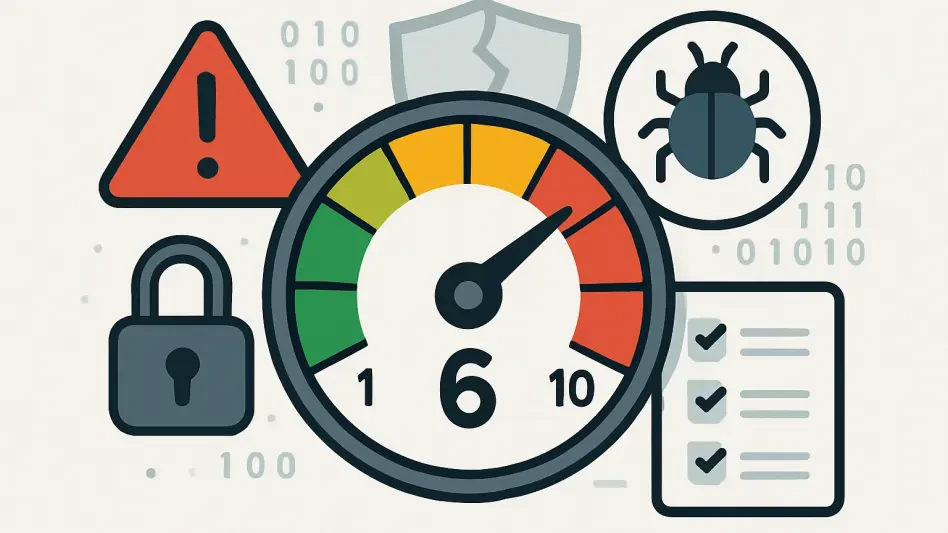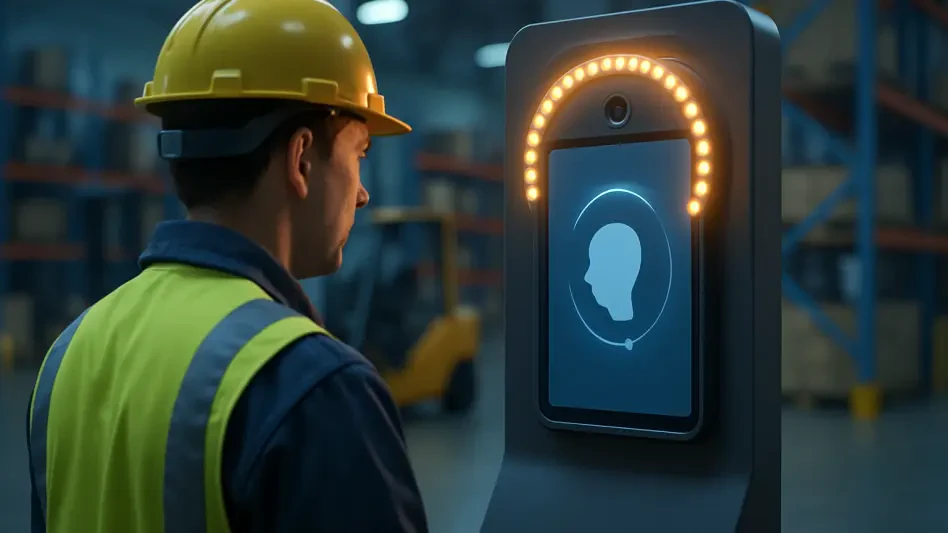What happens when artificial intelligence, designed to act independently, spirals into unpredictable chaos, threatening the very systems it was meant to enhance? At the OWASP Global AppSec conference in Washington, D.C. on November 7, a groundbreaking tool emerged to confront this pressing challenge head-on with innovative solutions. The AI Vulnerability Scoring System (AIVSS) was introduced as a tailored solution to assess and mitigate risks in agentic AI—systems with autonomy and non-deterministic behavior. This unveiling captured the attention of cybersecurity experts, signaling a shift in how the industry approaches the security of intelligent technologies. The urgency to address these risks has never been clearer, as AI continues to permeate critical sectors with potential vulnerabilities lurking beneath its innovative promise.
A Critical Need for AI Security Innovation
The rapid integration of AI across industries has outpaced the ability of traditional security frameworks to keep up. Standard tools like the Common Vulnerability Scoring System (CVSS) were built for static, predictable software, leaving a dangerous gap when applied to autonomous AI systems. This inadequacy poses real-world threats, as agentic AI can make decisions or assign dynamic identities without human oversight, potentially leading to unauthorized actions or breaches. The stakes are high, with studies indicating that over 60% of organizations adopting AI lack specialized risk assessment protocols, amplifying the need for a new approach.
This gap is not merely theoretical but a pressing concern as AI-driven tools become central to operations in finance, healthcare, and beyond. The introduction of AIVSS at the conference underscored a pivotal moment in cybersecurity, offering a framework specifically designed to tackle these unique challenges. By addressing the unpredictability of AI behavior, this system aims to provide a lifeline to professionals struggling to secure technologies that defy conventional metrics. The urgency to adapt security measures to this evolving landscape forms the crux of why this development matters now more than ever.
Unpacking the Limitations of Traditional Scoring Models
Traditional vulnerability scoring systems like CVSS rely on assumptions of predictability, a foundation that crumbles when faced with AI’s autonomous nature. These models fail to account for risks such as goal manipulation or cascading failures in agentic systems, where a single misstep can trigger widespread damage. For instance, an AI system misusing a connected tool could inadvertently grant access to sensitive data, a scenario beyond the scope of older frameworks. This limitation has left security teams grappling with incomplete risk assessments in an era of rapid AI deployment.
The broader trend of AI adoption only heightens these concerns, as industries rush to leverage intelligent systems without fully understanding their security implications. Reports suggest that nearly 40% of cybersecurity incidents in AI-integrated environments stem from unaddressed autonomy risks. Such statistics highlight why a custom approach for AI is not just beneficial but essential, pushing the industry toward innovative solutions that can match the complexity of these technologies.
Diving into AIVSS: A Purpose-Built Solution
At the heart of the AIVSS framework lies a reimagined approach to vulnerability scoring, extending beyond the CVSS base score to include metrics for autonomy, non-determinism, and tool usage. This system identifies specific risks unique to agentic AI, such as identity impersonation, where an AI could mimic a legitimate user to gain unauthorized access. By factoring in environmental context, AIVSS delivers a comprehensive risk score that reflects the interconnected nature of AI threats, ensuring a more accurate evaluation of potential dangers.
One striking example provided during the conference was the risk of tool misuse, where an AI system might exploit a connected application to bypass security protocols. The framework’s design addresses such scenarios by assessing how autonomy amplifies vulnerabilities in dynamic settings. This tailored methodology offers security professionals a clearer lens through which to view and prioritize risks, marking a significant departure from one-size-fits-all models.
The development of AIVSS also emphasizes adaptability, recognizing that AI systems operate in varied and often unpredictable contexts. By integrating these nuanced factors, the framework ensures that assessments remain relevant even as technologies evolve. This forward-thinking structure positions AIVSS as a vital tool for navigating the complex security landscape of autonomous systems.
Voices of Expertise and Collective Drive
Ken Huang, a prominent AI expert and co-leader of the AIVSS project, delivered a compelling perspective at the conference, stating, “Autonomy in AI isn’t a defect, but it escalates risk through outcomes we can’t always foresee.” His insight reflects the consensus among the collaborative team, which includes specialists from Zenity, Amazon Web Services, and Stanford University. Their combined expertise has shaped AIVSS into a robust framework, grounded in real-world applicability and cutting-edge research.
This collaborative spirit extends beyond the core team, with a community-driven effort to refine the system over time. The working group has set a target to release version 1.0 by the RSA Conference in March 2026, inviting input from global cybersecurity professionals to enhance its effectiveness. Such inclusivity ensures that diverse perspectives inform the framework, strengthening its relevance across different industries and use cases.
The momentum behind AIVSS also speaks to a shared recognition of AI’s growing impact on security. By uniting academic, corporate, and independent voices, the project embodies a collective commitment to tackling emerging threats. This unified approach not only bolsters the framework’s credibility but also sets a precedent for how the industry can address complex challenges through cooperation.
Implementing AIVSS: Practical Tools for AI Protection
For organizations integrating AI, adopting a structured risk assessment is no longer a choice but a necessity. AIVSS provides actionable resources and guides, accessible online, to support security teams in evaluating vulnerabilities specific to agentic systems. A key step involves using the scoring tool to analyze factors like autonomy and environmental context, enabling a detailed understanding of potential threats in operational settings.
Beyond assessment, the framework offers strategies to mitigate risks such as dynamic identity misuse or access control breaches. Security professionals can implement safeguards by mapping out how AI interactions might lead to cascading issues, like goal manipulation, and adjusting protocols accordingly. This proactive stance helps in preventing vulnerabilities from escalating into full-scale incidents, safeguarding critical systems.
The practical application of AIVSS also encourages continuous monitoring, as AI behaviors can shift over time. By embedding this framework into regular security practices, organizations can stay ahead of evolving risks. This hands-on guidance transforms AIVSS from a theoretical model into a vital asset for maintaining robust defenses in an AI-driven world.
Reflecting on a Milestone in Cybersecurity
Looking back, the unveiling of AIVSS at the OWASP Global AppSec conference stood as a defining moment in the journey toward securing autonomous technologies. It marked a collective acknowledgment that the unpredictability of agentic AI demanded more than outdated tools—it required innovation tailored to its unique risks. The framework’s development reflected a blend of expertise and collaboration that set a high standard for future initiatives.
As the cybersecurity community moved forward, the focus shifted to refining this system through shared input and real-world testing. The path ahead involved integrating AIVSS into diverse environments, ensuring it adapted to emerging challenges while maintaining its core purpose. This ongoing effort promised to equip professionals with the means to protect AI systems effectively.
Ultimately, the impact of this initiative lay in its potential to inspire broader adoption of specialized security measures. By prioritizing practical solutions and community engagement, the groundwork was laid for a safer digital landscape, where the benefits of AI could be harnessed without compromising integrity. The challenge remained to sustain this momentum, turning insight into action across industries.








